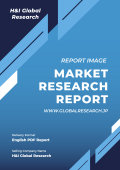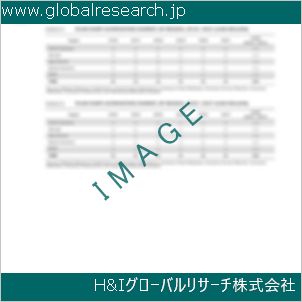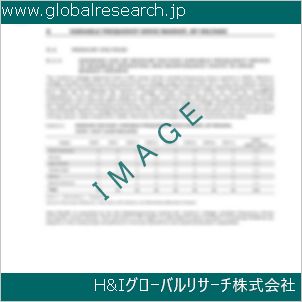1 Viscosity Sensors for Liquid Market Overview
1.1 Product Definition
1.2 Viscosity Sensors for Liquid Segment by Type
1.2.1 Global Viscosity Sensors for Liquid Market Value Growth Rate Analysis by Type 2022 VS 2029
1.2.2 Sonic Sensor
1.2.3 Mechanical Sensor
1.3 Viscosity Sensors for Liquid Segment by Application
1.3.1 Global Viscosity Sensors for Liquid Market Value Growth Rate Analysis by Application: 2022 VS 2029
1.3.2 Industry
1.3.3 Ocean Industry
1.3.4 Others
1.4 Global Market Growth Prospects
1.4.1 Global Viscosity Sensors for Liquid Production Value Estimates and Forecasts (2018-2029)
1.4.2 Global Viscosity Sensors for Liquid Production Capacity Estimates and Forecasts (2018-2029)
1.4.3 Global Viscosity Sensors for Liquid Production Estimates and Forecasts (2018-2029)
1.4.4 Global Viscosity Sensors for Liquid Market Average Price Estimates and Forecasts (2018-2029)
1.5 Assumptions and Limitations
2 Market Competition by Manufacturers
2.1 Global Viscosity Sensors for Liquid Production Market Share by Manufacturers (2018-2023)
2.2 Global Viscosity Sensors for Liquid Production Value Market Share by Manufacturers (2018-2023)
2.3 Global Key Players of Viscosity Sensors for Liquid, Industry Ranking, 2021 VS 2022 VS 2023
2.4 Global Viscosity Sensors for Liquid Market Share by Company Type (Tier 1, Tier 2 and Tier 3)
2.5 Global Viscosity Sensors for Liquid Average Price by Manufacturers (2018-2023)
2.6 Global Key Manufacturers of Viscosity Sensors for Liquid, Manufacturing Base Distribution and Headquarters
2.7 Global Key Manufacturers of Viscosity Sensors for Liquid, Product Offered and Application
2.8 Global Key Manufacturers of Viscosity Sensors for Liquid, Date of Enter into This Industry
2.9 Viscosity Sensors for Liquid Market Competitive Situation and Trends
2.9.1 Viscosity Sensors for Liquid Market Concentration Rate
2.9.2 Global 5 and 10 Largest Viscosity Sensors for Liquid Players Market Share by Revenue
2.10 Mergers & Acquisitions, Expansion
3 Viscosity Sensors for Liquid Production by Region
3.1 Global Viscosity Sensors for Liquid Production Value Estimates and Forecasts by Region: 2018 VS 2022 VS 2029
3.2 Global Viscosity Sensors for Liquid Production Value by Region (2018-2029)
3.2.1 Global Viscosity Sensors for Liquid Production Value Market Share by Region (2018-2023)
3.2.2 Global Forecasted Production Value of Viscosity Sensors for Liquid by Region (2024-2029)
3.3 Global Viscosity Sensors for Liquid Production Estimates and Forecasts by Region: 2018 VS 2022 VS 2029
3.4 Global Viscosity Sensors for Liquid Production by Region (2018-2029)
3.4.1 Global Viscosity Sensors for Liquid Production Market Share by Region (2018-2023)
3.4.2 Global Forecasted Production of Viscosity Sensors for Liquid by Region (2024-2029)
3.5 Global Viscosity Sensors for Liquid Market Price Analysis by Region (2018-2023)
3.6 Global Viscosity Sensors for Liquid Production and Value, Year-over-Year Growth
3.6.1 North America Viscosity Sensors for Liquid Production Value Estimates and Forecasts (2018-2029)
3.6.2 Europe Viscosity Sensors for Liquid Production Value Estimates and Forecasts (2018-2029)
3.6.3 China Viscosity Sensors for Liquid Production Value Estimates and Forecasts (2018-2029)
3.6.4 Japan Viscosity Sensors for Liquid Production Value Estimates and Forecasts (2018-2029)
4 Viscosity Sensors for Liquid Consumption by Region
4.1 Global Viscosity Sensors for Liquid Consumption Estimates and Forecasts by Region: 2018 VS 2022 VS 2029
4.2 Global Viscosity Sensors for Liquid Consumption by Region (2018-2029)
4.2.1 Global Viscosity Sensors for Liquid Consumption by Region (2018-2023)
4.2.2 Global Viscosity Sensors for Liquid Forecasted Consumption by Region (2024-2029)
4.3 North America
4.3.1 North America Viscosity Sensors for Liquid Consumption Growth Rate by Country: 2018 VS 2022 VS 2029
4.3.2 North America Viscosity Sensors for Liquid Consumption by Country (2018-2029)
4.3.3 U.S.
4.3.4 Canada
4.4 Europe
4.4.1 Europe Viscosity Sensors for Liquid Consumption Growth Rate by Country: 2018 VS 2022 VS 2029
4.4.2 Europe Viscosity Sensors for Liquid Consumption by Country (2018-2029)
4.4.3 Germany
4.4.4 France
4.4.5 U.K.
4.4.6 Italy
4.4.7 Russia
4.5 Asia Pacific
4.5.1 Asia Pacific Viscosity Sensors for Liquid Consumption Growth Rate by Region: 2018 VS 2022 VS 2029
4.5.2 Asia Pacific Viscosity Sensors for Liquid Consumption by Region (2018-2029)
4.5.3 China
4.5.4 Japan
4.5.5 South Korea
4.5.6 China Taiwan
4.5.7 Southeast Asia
4.5.8 India
4.6 Latin America, Middle East & Africa
4.6.1 Latin America, Middle East & Africa Viscosity Sensors for Liquid Consumption Growth Rate by Country: 2018 VS 2022 VS 2029
4.6.2 Latin America, Middle East & Africa Viscosity Sensors for Liquid Consumption by Country (2018-2029)
4.6.3 Mexico
4.6.4 Brazil
4.6.5 Turkey
5 Segment by Type
5.1 Global Viscosity Sensors for Liquid Production by Type (2018-2029)
5.1.1 Global Viscosity Sensors for Liquid Production by Type (2018-2023)
5.1.2 Global Viscosity Sensors for Liquid Production by Type (2024-2029)
5.1.3 Global Viscosity Sensors for Liquid Production Market Share by Type (2018-2029)
5.2 Global Viscosity Sensors for Liquid Production Value by Type (2018-2029)
5.2.1 Global Viscosity Sensors for Liquid Production Value by Type (2018-2023)
5.2.2 Global Viscosity Sensors for Liquid Production Value by Type (2024-2029)
5.2.3 Global Viscosity Sensors for Liquid Production Value Market Share by Type (2018-2029)
5.3 Global Viscosity Sensors for Liquid Price by Type (2018-2029)
6 Segment by Application
6.1 Global Viscosity Sensors for Liquid Production by Application (2018-2029)
6.1.1 Global Viscosity Sensors for Liquid Production by Application (2018-2023)
6.1.2 Global Viscosity Sensors for Liquid Production by Application (2024-2029)
6.1.3 Global Viscosity Sensors for Liquid Production Market Share by Application (2018-2029)
6.2 Global Viscosity Sensors for Liquid Production Value by Application (2018-2029)
6.2.1 Global Viscosity Sensors for Liquid Production Value by Application (2018-2023)
6.2.2 Global Viscosity Sensors for Liquid Production Value by Application (2024-2029)
6.2.3 Global Viscosity Sensors for Liquid Production Value Market Share by Application (2018-2029)
6.3 Global Viscosity Sensors for Liquid Price by Application (2018-2029)
7 Key Companies Profiled
7.1 TrueDyne Sensors AG
7.1.1 TrueDyne Sensors AG Viscosity Sensors for Liquid Corporation Information
7.1.2 TrueDyne Sensors AG Viscosity Sensors for Liquid Product Portfolio
7.1.3 TrueDyne Sensors AG Viscosity Sensors for Liquid Production, Value, Price and Gross Margin (2018-2023)
7.1.4 TrueDyne Sensors AG Main Business and Markets Served
7.1.5 TrueDyne Sensors AG Recent Developments/Updates
7.2 Rheonics
7.2.1 Rheonics Viscosity Sensors for Liquid Corporation Information
7.2.2 Rheonics Viscosity Sensors for Liquid Product Portfolio
7.2.3 Rheonics Viscosity Sensors for Liquid Production, Value, Price and Gross Margin (2018-2023)
7.2.4 Rheonics Main Business and Markets Served
7.2.5 Rheonics Recent Developments/Updates
7.3 CMT
7.3.1 CMT Viscosity Sensors for Liquid Corporation Information
7.3.2 CMT Viscosity Sensors for Liquid Product Portfolio
7.3.3 CMT Viscosity Sensors for Liquid Production, Value, Price and Gross Margin (2018-2023)
7.3.4 CMT Main Business and Markets Served
7.3.5 CMT Recent Developments/Updates
7.4 DSI
7.4.1 DSI Viscosity Sensors for Liquid Corporation Information
7.4.2 DSI Viscosity Sensors for Liquid Product Portfolio
7.4.3 DSI Viscosity Sensors for Liquid Production, Value, Price and Gross Margin (2018-2023)
7.4.4 DSI Main Business and Markets Served
7.4.5 DSI Recent Developments/Updates
7.5 Jenton
7.5.1 Jenton Viscosity Sensors for Liquid Corporation Information
7.5.2 Jenton Viscosity Sensors for Liquid Product Portfolio
7.5.3 Jenton Viscosity Sensors for Liquid Production, Value, Price and Gross Margin (2018-2023)
7.5.4 Jenton Main Business and Markets Served
7.5.5 Jenton Recent Developments/Updates
7.6 Martechnic
7.6.1 Martechnic Viscosity Sensors for Liquid Corporation Information
7.6.2 Martechnic Viscosity Sensors for Liquid Product Portfolio
7.6.3 Martechnic Viscosity Sensors for Liquid Production, Value, Price and Gross Margin (2018-2023)
7.6.4 Martechnic Main Business and Markets Served
7.6.5 Martechnic Recent Developments/Updates
7.7 TE
7.7.1 TE Viscosity Sensors for Liquid Corporation Information
7.7.2 TE Viscosity Sensors for Liquid Product Portfolio
7.7.3 TE Viscosity Sensors for Liquid Production, Value, Price and Gross Margin (2018-2023)
7.7.4 TE Main Business and Markets Served
7.7.5 TE Recent Developments/Updates
7.8 SensorsONE
7.8.1 SensorsONE Viscosity Sensors for Liquid Corporation Information
7.8.2 SensorsONE Viscosity Sensors for Liquid Product Portfolio
7.8.3 SensorsONE Viscosity Sensors for Liquid Production, Value, Price and Gross Margin (2018-2023)
7.8.4 SensorsONE Main Business and Markets Served
7.7.5 SensorsONE Recent Developments/Updates
7.9 Anton Paar
7.9.1 Anton Paar Viscosity Sensors for Liquid Corporation Information
7.9.2 Anton Paar Viscosity Sensors for Liquid Product Portfolio
7.9.3 Anton Paar Viscosity Sensors for Liquid Production, Value, Price and Gross Margin (2018-2023)
7.9.4 Anton Paar Main Business and Markets Served
7.9.5 Anton Paar Recent Developments/Updates
7.10 AAVOS
7.10.1 AAVOS Viscosity Sensors for Liquid Corporation Information
7.10.2 AAVOS Viscosity Sensors for Liquid Product Portfolio
7.10.3 AAVOS Viscosity Sensors for Liquid Production, Value, Price and Gross Margin (2018-2023)
7.10.4 AAVOS Main Business and Markets Served
7.10.5 AAVOS Recent Developments/Updates
8 Industry Chain and Sales Channels Analysis
8.1 Viscosity Sensors for Liquid Industry Chain Analysis
8.2 Viscosity Sensors for Liquid Key Raw Materials
8.2.1 Key Raw Materials
8.2.2 Raw Materials Key Suppliers
8.3 Viscosity Sensors for Liquid Production Mode & Process
8.4 Viscosity Sensors for Liquid Sales and Marketing
8.4.1 Viscosity Sensors for Liquid Sales Channels
8.4.2 Viscosity Sensors for Liquid Distributors
8.5 Viscosity Sensors for Liquid Customers
9 Viscosity Sensors for Liquid Market Dynamics
9.1 Viscosity Sensors for Liquid Industry Trends
9.2 Viscosity Sensors for Liquid Market Drivers
9.3 Viscosity Sensors for Liquid Market Challenges
9.4 Viscosity Sensors for Liquid Market Restraints
10 Research Finding and Conclusion
11 Methodology and Data Source
11.1 Methodology/Research Approach
11.1.1 Research Programs/Design
11.1.2 Market Size Estimation
11.1.3 Market Breakdown and Data Triangulation
11.2 Data Source
11.2.1 Secondary Sources
11.2.2 Primary Sources
11.3 Author List
11.4 Disclaimer
| ※参考情報 液体用粘度センサーは、液体の粘度を測定するための装置であり、流体の物理的特性の一つである粘度をリアルタイムでモニタリングする役割を果たします。粘度は流体の流れや変形に対する抵抗を示す指標であり、液体の化学的性質や温度、圧力などに影響されます。このため、粘度の計測は多くの産業や研究で重要な情報を提供します。 粘度センサーの基本的な定義は、液体の流動に対する抵抗を測定し、その結果を粘度の形で表示するデバイスを指します。これにより、プロセスの制御や品質管理が可能となります。 液体用粘度センサーの特徴としては、まずその精度が挙げられます。高精度であることが求められる用途では、非常に重要な要素です。また、リアルタイムで測定が可能であるため、流体の状態に応じた即時の対応が可能です。さらに、耐環境性や耐薬品性も重要であり、特に厳しい条件下で使用される場合には、これらの特性が求められます。 液体用粘度センサーにはいくつかの種類があり、代表的なものとしては次のようなものがあります。まず「回転粘度計」があります。これは、試料液にプロペラ状の回転体を入れ、その回転に要する力を測定することで粘度を算出する方法です。次に「管粘度計」と呼ばれるものがあります。管を流れる液体の流速を測定し、粘度を求める方式です。他にも「振動粘度計」や「コーンプレート粘度計」など、さまざまな原理に基づくセンサーが存在します。 用途については、液体用粘度センサーは多岐にわたり、化学工業や食品業界、製薬業界、石油業界などで広く使用されています。例えば、化学工業では反応中の物質の粘度を監視することで、反応の進行状況や生成物の特性を把握するのに役立ちます。食品業界では、製品のテクスチャーや口当たりに直結するため、品質管理の重要な指標となります。製薬業界では、薬剤の粘度を測定することで、製品の投与量や溶解性の確認に寄与します。 関連技術としては、粘度センサーだけでなく、流量センサーや温度センサーとの連携が挙げられます。流体の特性を正確に把握するためには、これらのセンサーから得られる情報を統合することが重要です。また、デジタル技術の向上により、IoT(モノのインターネット)との連携も進んでおり、粘度データをクラウドやサーバーにアップロードし、リアルタイムで管理するシステムが増加しています。これにより、遠隔監視やデータ解析が可能になり、より高度なプロセス管理が実現します。 さらに、粘度センサーは非接触で測定が可能な技術や、微小量の液体を迅速に測定するための技術も開発されています。これにより、サンプルのロスを最小限に抑えつつ、精度の高い測定が可能となります。環境に優しい製品の開発が進む中、エネルギー消費を抑えた省電力型の測定デバイスも注目されています。 結論として、液体用粘度センサーは、様々な産業において不可欠なツールであり、その重要性は今後さらに増していくと考えられます。流体の挙動を理解し、効率的なプロセスを実現するためには、粘度の正確な測定が欠かせないからです。今後の技術革新に注目しつつ、粘度測定技術の進展を見守っていきたいと思います。 |
❖ 免責事項 ❖
http://www.globalresearch.jp/disclaimer












